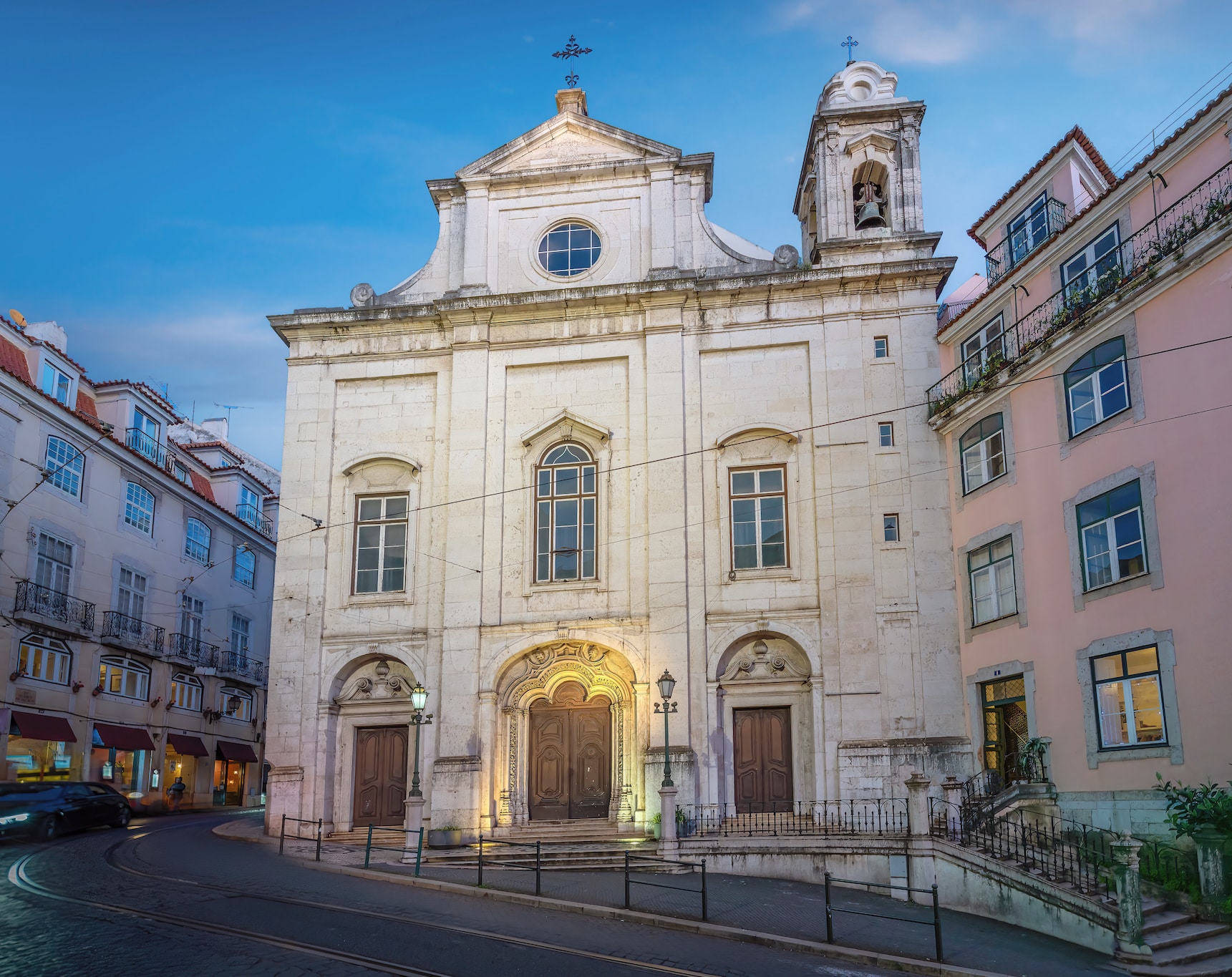This beautiful church in downtown Lisbon, dedicated to St Mary Magdalene, has many attributes – among which is that it holds Masses in English.
The church’s history of destruction and architectural rescue stands as a living symbol of spiritual restoration, and how ecclesiastical buildings so often tell the story of a city better than any historical source.
The original church was built in the mid-12th century and the Madalena has suffered much. It was rebuilt by Ferdinand I after a major fire in 1363; in 1600 it was damaged by a cyclone. Maria I rebuilt it again in 1783 after its destruction in the famous Lisbon earthquake of 1755.
Modified in 1833, the Madalena was able to maintain its beautiful Manueline portal, which was salvaged from the rubble; the small, late-Gothic arch is now a national monument. The church is a peaceful refuge from the hustle and bustle of the nearby shops.
After Mass there are few better places to eat in the whole of Lisbon than Cervejaría Ramiro, which is an enjoyable 15-minute walk away.
Ramiro is famous for its shellfish, much of which is sourced in Setúbal, a little way down the coast. I nearly always choose the same thing: a draft beer to start, toasted bread and butter and a buttery sheep’s cheese from Azeitão, just over the bridge.
Then a few large rock oysters – I like Quinta do Carmo white wine from the Alentejo to accompany them, which is excellent value at under €20 a bottle. Bulhão Pato are also a must: clams cooked in butter and coriander. The prawns are from the Algarve and are served boiled with salt. Spiny prawns from Oporto are also available, if a little more expensive.
While the prospect of a goose barnacle may be daunting, both in cost and appearance, don’t be put off. The cost is due to the fact that they are very difficult for the fishermen to remove from the rocks to which they adhere themselves. They resemble small rubber tubes with tiny elephant feet: remove the skin and then bite the tube away from the feet.
The taste is rather like a slightly salty chicken, quite good but you won’t need many for a first attempt. Another essential on the menu is boiled cold langoustine, which to me is better than lobster. Meanwhile, Ramiro’s crab is regarded as some of the best in Lisbon.
A large, baked giant prawn is also a great and memorable local delicacy. You gently open the cheek to discover a well of intense liquid into which you should dunk the tail. To finish, the locals order a rare steak sandwich – but I have usually had enough by then.
It is worth mentioning that it can be difficult to get a table. There are two ways to conquer this: either get there at noon on a weekday (it’s closed on Mondays), or send them an email beforehand. After lunch you could take a ride on the number 28 tram, which trundles its way all through this enchanting city.
<em>Igreja da Madalena and Cervejaría Ramiro, Rua Almirante Reis 1, Lisbon; <a href="http://cervejariaramiro.com">cervejariaramiro.com</a></em>
<strong><strong>This article originally appeared in the May 2024 issue of the <em>Catholic Herald</em>. To subscribe to our award-winning, thought-provoking magazine and have independent and high-calibre counter-cultural Catholic journalism delivered to your door anywhere in the world click</strong> <mark style="background-color:rgba(0, 0, 0, 0)" class="has-inline-color has-vivid-cyan-blue-color"><a href="https://catholicherald.co.uk/subscribe/?swcfpc=1">h</a></mark><a href="https://catholicherald.co.uk/subscribe/?swcfpc=1"><mark style="background-color:rgba(0, 0, 0, 0)" class="has-inline-color has-vivid-cyan-blue-color">ere</mark></a>.</strong>



